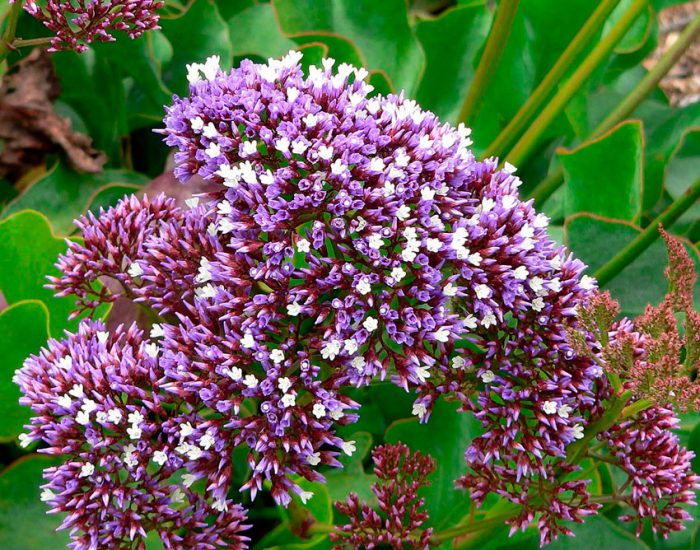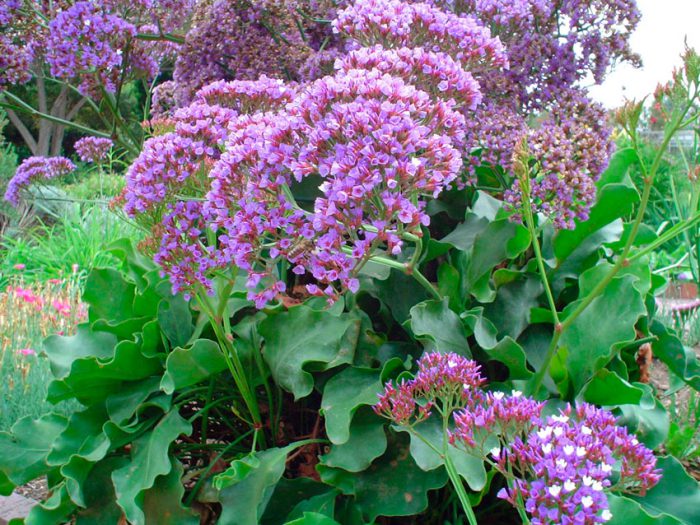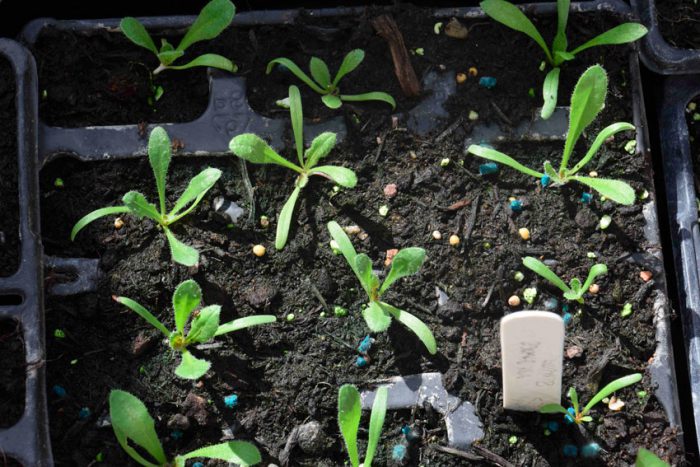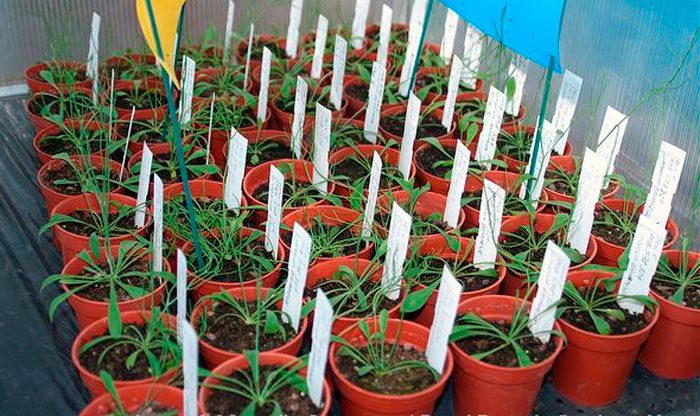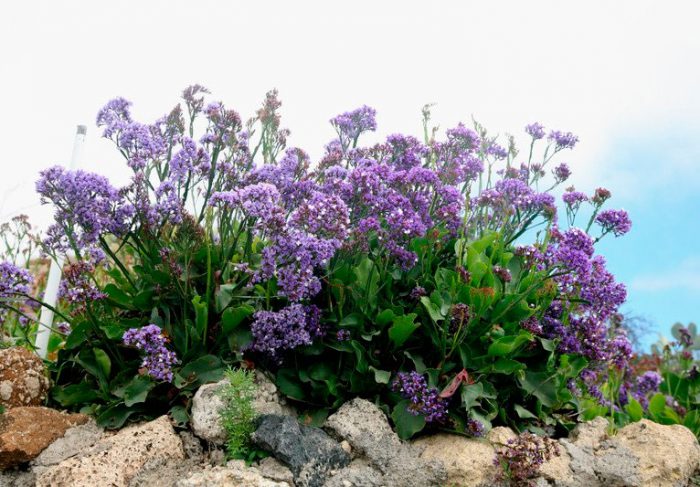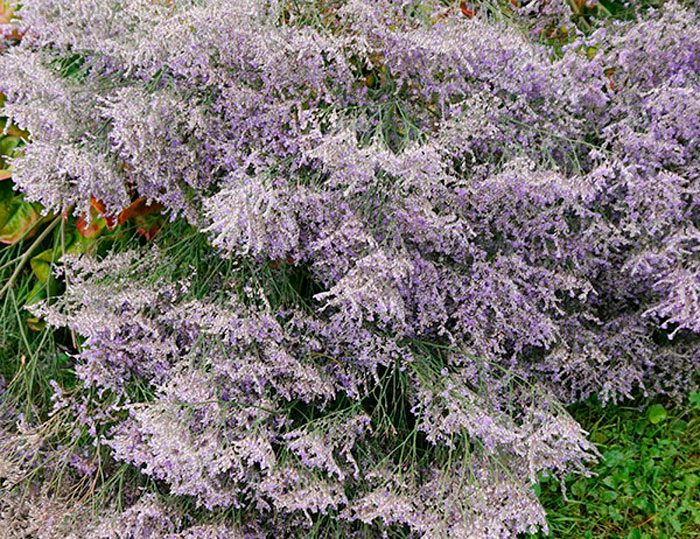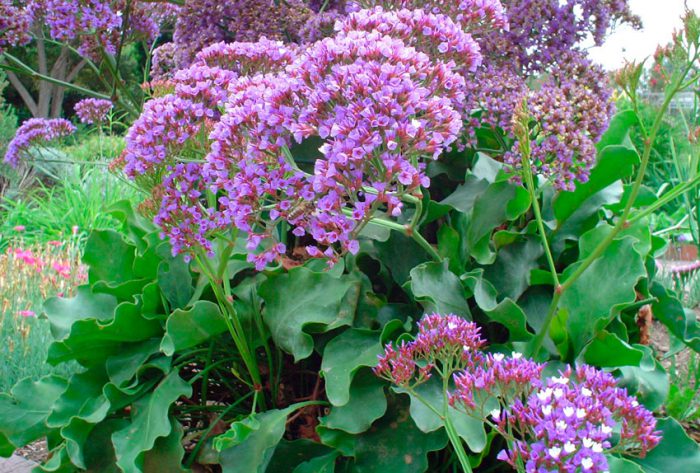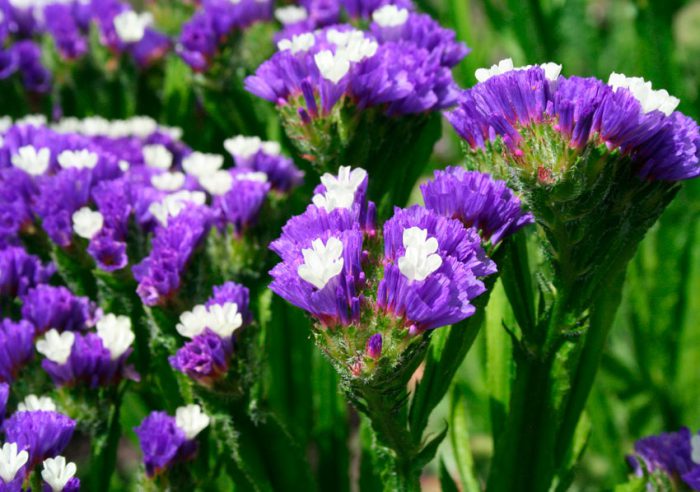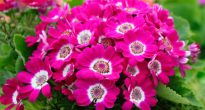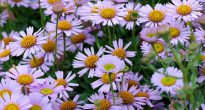The plant statice (statice) or kermek (Limonium) is a representative of the Lead family, and earlier this genus was part of the Kermekov family. According to information taken from various sources, this genus unites 166–350 species. In nature, such plants can be found in Eurasia and on other continents. It happened that even in the sand dunes, the kermek formed thickets half a meter high. The scientific name of such a flower means "unyielding, persistent." In Russia, this plant is also called the Turkic word "kermek", sea lavender, Tatar white lemongrass, and also immortelle. The statice has been cultivated since 1600.
Content
- 1 Features of the statice
- 2 Growing statice from seeds
- 3 Planting statice in open ground
- 4 Caring for the statice
- 5 Types and varieties of statitsa (kermek) with photos and names
- 5.1 Statica Suvorov (Limonium suworowii), or plantain flower (Psylliostachys suworowii)
- 5.2 Statice Gmelin (Limonium gmelinii)
- 5.3 Kermek broadleaf (Limonium latifolium)
- 5.4 Kermek Perez (Limonium perezii)
- 5.5 Kermek Bondwelli (Limonium bonduellii)
- 5.6 Chinese Kermek (Limonium sinensis)
- 5.7 Kermek notched (Limonium sinuatum)
Features of the statice
Statice is represented by dwarf shrubs or perennial herbaceous plants. Large, often basal leaf plates form a large rosette. Densely pubescent shoots can reach 0.3–0.9 m in height, they are straight and leafless. Five-membered small flowers are part of the spikelets, which are collected in panicle or corymbose inflorescences. The flower cups can be yellow, blue, salmon, crimson, white, cyan, violet, pink or purple. The plant blooms in July, while flowering continues until frost. The seeds remain viable for 4–5 years.
Such a flower is distinguished by its unpretentiousness, in this it looks like a weed. However, gardeners love him not only for this. Kermek is very resistant to various pests and diseases, as well as to a lack of moisture and other unfavorable external factors. Such a flower can be grown on any soil, there is almost no need to care for it, and if you wish, you can not feed it at all. However, when growing it, it should be borne in mind that it reacts extremely negatively to stagnant liquid in the root system, to strong shading and to subzero temperatures. In this regard, in the middle latitudes, the statice is grown as an annual.
Growing statice from seeds
A perennial plant statice is able to reproduce well independently by self-seeding.Her flowering is very lush, and her fringed paniculate inflorescences stand perfectly in the cut for a long time. In this regard, florists often use kermek, creating bouquets and compositions, including dry ones.
Sowing seedlings
The seeds are covered with a fairly strong shell, therefore, before proceeding with sowing, they must be scarified. To do this, take a rough file or sandpaper, and walk it over the noses of the seeds. Then they are immersed in Epin's solution for several hours or kept in moistened sawdust for two or three days.
Seedlings are sown in February or the first days of March. For this, peat or humus pots are used, filled with moistened sterile loose soil mixture, in each of which only one seed should be placed. Next, sprinkle the seeds with a thin layer of soil. The container with the pots must be covered with glass on top and removed to a place with an air temperature of 16 to 21 degrees. If everything is done correctly, then the first seedlings may appear after 1.5-2.5 weeks from the moment of sowing. In the event that you want the seedlings to appear much earlier, then use the bottom heating system.
Growing seedlings
When growing seedlings, do not forget to arrange systematic ventilation for crops. The emerging seedlings will need to be regularly watered; after this procedure, do not forget to gently loosen the surface of the substrate around the plants. Picking seedlings into individual pots or cups is needed only if a container, box or small cassette was chosen for its cultivation. It is carried out when the plants form 2 true leaf plates. It is important to pick the seedlings in a timely manner, because the root system grows very quickly, and it is quite large and has a long taproot.
Seedlings must be hardened and you need to start doing this in mid-April. To do this, the container with the plants should be moved outside every day, while it is necessary to gradually increase the time the plants stay outside. Once the seedlings can be left in the fresh air for the whole day, they will be completely ready for planting in open soil.


Watch this video on YouTube
Planting statice in open ground
What time to plant
For planting statice, you should choose a well-lit area, since in a shaded place it can die. This flower does not need protection from wind gusts. The soil can be absolutely any, but the plants will thrive best in sandy or loamy, well-drained, slightly alkaline or neutral soil. Planting seedlings in open soil should be done in June, the fact is that in May there is a high probability of frost at night.
Landing features
Such a plant does not tolerate transplanting quite well. In this regard, when preparing the planting holes, it should be borne in mind that their size should be such that the entire contents of the pot can freely fit in them (root system and earthen lump). Plastic cups must be carefully cut and removed, their contents should be lowered into the holes, which are covered with soil. The planted flowers need to be watered with salted water (1 large spoonful of salt per bucket of water). The distance between the holes directly depends on the type of statice and can vary from 0.25 to 0.4 m.
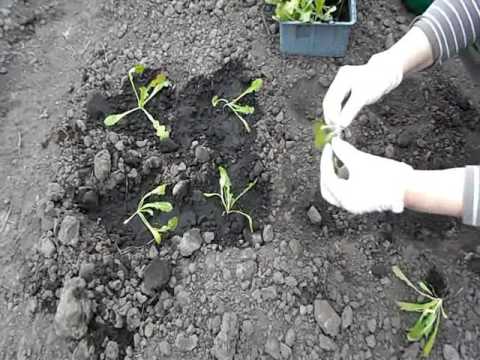

Watch this video on YouTube
Caring for the statice
After planting kermek in open soil, you can practically forget about it, since it will grow and develop well without leaving. All that is required is to water it occasionally, as well as to carry out timely weeding while simultaneously loosening the land on the site. It is necessary to water the bushes only when the leaf plates lose their turgor.In a rainy summer, you can forget about watering such a plant in general, but do not forget at least sometimes to loosen the soil surface near the bushes. If there are long dry periods in the summer, then the statice will need to be watered 2 times throughout the season, while for one of the waterings you need to take salted water (for 10 liters of water, 7 small tablespoons of salt). The bushes should be watered at the root in the evening, and for this you need to take well-settled water, which has heated up during the day.
It is not necessary to feed such flowers without fail, but it is recommended to do this if they are grown in poor soil. The first time the kermek is fed after 7 days from the moment of planting the seedlings in open soil. Subsequent feeding is carried out at a frequency of 1 time in 15-30 days (directly depends on the nutrient content of the soil). The plant is fed with a solution of complex mineral fertilizer. In the autumn, the statice is not fed.
Diseases and pests
If the summer time turned out to be damp or the bushes were watered very often and too abundantly, the plants may develop rot of vegetable crops, called botrytis. In this case, the affected bushes should be treated with a fungicide solution. A disease such as oidium can be recognized by the appearance of white mold. To cure the bushes, they must be treated with a sulfur-containing agent. When growing kermek, it should be borne in mind that it is very resistant to diseases and pests, and does not get sick often. If such a plant is provided with proper care, then problems with its health will not arise at all.
The main thing is to grow strong and healthy seedlings of statice, and after transplanting it into open soil, you can no longer worry about the plants.
After flowering
There are frost-resistant types of kermek, which are not afraid of frosts down to minus 30 degrees. However, such flowers should be prepared for wintering in a certain way. After the bush turns yellow and begins to dry out, its foliage and shoots will need to be cut to the level of the ground surface. Then the area with plants is covered with needles, brushwood, straw or fallen leaves, and on top it is covered with a non-woven covering material. Such material is intended to protect the plant not so much from severe frosts as from melt water in spring. Remember to fix the material by pressing something against the surface of the site.
Cropped kermek inflorescences can be used to create dry bouquets. In this case, pruning of inflorescences is carried out before they begin to fade, and their saturated color will fade under the influence of the scorching rays of the sun. Cut inflorescences must be removed to a dark room, while they are turned over and suspended. In this state, the flowers will remain until they are completely dry. Well-dried inflorescences are able to delight with their bright and very beautiful flowers for more than 1 year.
Types and varieties of statitsa (kermek) with photos and names
Popular among gardeners are those types of statice, which are described in detail below.
Statica Suvorov (Limonium suworowii), or plantain flower (Psylliostachys suworowii)
The height of the bush reaches approximately 0.6 meters. The composition of long ears includes flowers of lilac-pink or pink color.
Statice Gmelin (Limonium gmelinii)
This perennial winter-hardy plant rarely exceeds 0.5 meters in height. Large shields are composed of purple-blue flowers.
Kermek broadleaf (Limonium latifolium)
The height of the bush, which has large basal leaf plates, can vary from 0.6 to 0.75 m. Spreading paniculate inflorescences consist of violet-blue flowers. The most popular varieties:
- Violet... Bushes adorn inflorescences of a deep purple hue.
- Blue Cloud... The color of the flowers is lavender.
Kermek Perez (Limonium perezii)
The homeland of this species is the Canary Islands, where they began to cultivate it. The stems of this plant reach a height of about 0.6 m. Large, showy inflorescences are painted in purple.Their florists are very often used when creating dry and fresh compositions.
Kermek Bondwelli (Limonium bonduellii)
The homeland of this species is North Africa. This perennial plant reaches a height of about 0.9 m. The fragile shoots do not have ridges. The loose inflorescences include large white or yellow flowers. It has been cultivated since 1859. This species has no varieties, but its seeds are often present in flower mixtures.
Chinese Kermek (Limonium sinensis)
This species began to be cultivated not so long ago. In the middle latitudes, this perennial plant is grown as an annual. Its basal rosette consists of dense shiny leaf plates, from the central part of which a large number of thin peduncles grow, their height varies from 0.5 to 0.7 m.Such peduncles bear delicate inflorescences consisting of small yellow flowers that surround the funnel-shaped perianths forms of white or cream color. Most popular varieties:
- Confetti... The height of the bush is about 0.45-0.5 m. The color of the graceful inflorescences is creamy white.
- Elegant... Plant height is about 0.7 m. Inflorescences are white-cream colored.
Kermek notched (Limonium sinuatum)
The homeland of this species is the Mediterranean and Asia Minor. This perennial herb is grown as an annual. The height of the shoots is about 0.6 m. There are a large number of thin basal leaf plates of an oblong shape, painted in a pale green color. They are pinnately or pinnately lobed and have short petioles. Erect or ascending peduncles branch in the upper part. Small (up to 10 mm in diameter) flowers have pubescent dry wheel-shaped cups and white, pink or violet-blue color, their corolla is light yellow or white. This type is the most popular, and it has been cultivated since 1600. You can buy flower mixtures of this type, both domestic and foreign production. For instance:
- Kermek Crimean... In this mixture, the height of the flowers varies from 0.3 to 0.8 m. The color of the inflorescences is blue, purple, pink or yellow.
- Mixed Highbrides... The height of the bushes is about 0.45 m. The color of the flowers is white, blue, pink, purple and yellow.
- Kermek Supreme... This series of varieties is represented by plants, in height not exceeding 0.6 m, of various colors.
- Shamo... A series of varieties with a height of about 0.7 m bushes, inflorescences are painted in various shades of salmon color.
- Fortress... The bush reaches a height of 0.7-0.8 m. The color of the flowers is yellow, blue, purple, white or pink.
- Compinidi... A series of varieties with plants about 0.5 m high. Inflorescences of blue, blue and pink colors.
- Petit Bouquet Series... The height of compact bushes is about 0.3 m. They have a very large number of inflorescences painted in bed tones: blue, light pink, white, lilac or cream.
In addition to such multi-color mixtures, if you wish, you can buy varieties presented in one color:
- Blue River... The height of the bush is half a meter. The color of the flowers is sky blue.
- Epricot... Bushes 0.6 m high are decorated with pink-salmon inflorescences.
- Lavendel... The height of the bush is 0.8 m, the color of the inflorescences is lavender.
- Iceberg... The height of the bushes is 0.75 m, the flowers are white.
- Nachtblau... Bushes, reaching a height of 0.9 m, are decorated with dark blue flowers.
- Rosenshimmer and Emarikan Beauty... The bush reaches a height of 0.6 m. The color of the inflorescences is pink-carmine.

